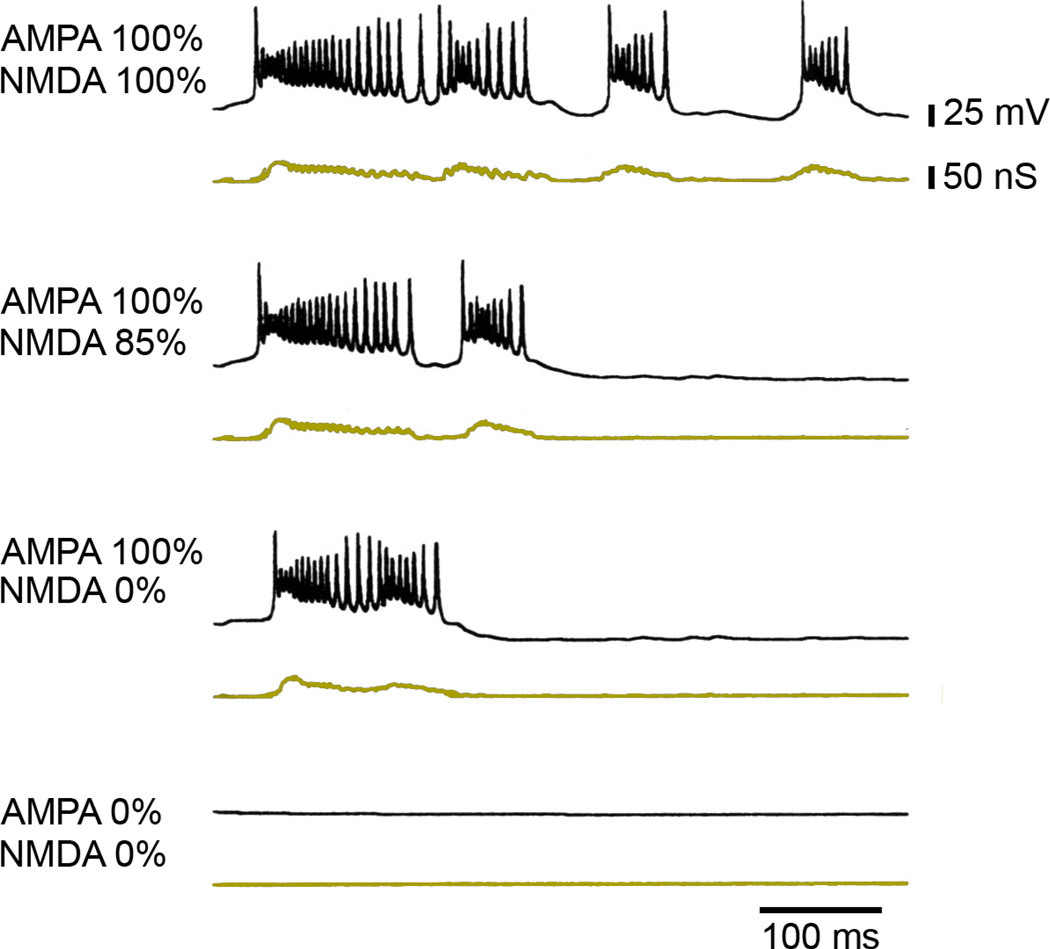Figure 3.
Computer simulation based on a network such as that shown in Fig. 1, illustrating the different contributions of AMPA and NMDA receptors to epileptiform activity. Top (black) traces represent the voltage response of the neuron; bottom (colored) traces represent the conductance of AMPA receptors in the apical dendrite. As the conductance due to NMDA receptors is reduced, the late burst is progressively eliminated, but the initial burst response is largely unaffected. Setting the conductance of NMDA receptors and AMPA receptors to zero abolishes synchronized activity. Compare the simulation with the experimental data shown in Fig. 2. Together, the results indicate that initiation of bursting involves spread of firing involving AMPA receptors. Adapted from (15), with permission of John Wiley & Sons.

